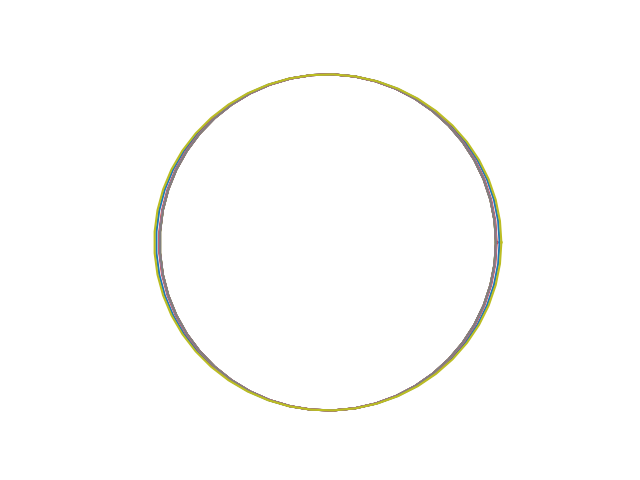If a science book shows you obviously elliptical orbits of planets, it is literally stretching the truth.
I was taught that our benighted ancestors insisted that planetary orbits are circles for philosophical reasons. In fact, they insisted planetary orbits are circular because they very nearly are.
Here’s a plot of the orbits of all nine planets in our solar system, or all eight planets and the dwarf planet Pluto if you prefer, scaled so that they all have the same semi-minor axis.

See how far the “highly elliptical” orbit of Pluto extends past the perfect circle in the inside? Me neither.
Here is how Kepler discovered that planets have elliptical orbits [1].
From 1601 to 1608, he [Kepler] tried fitting various geometrical curves to Tycho’s data on the positions of Mars. Finally, after struggling for almost a year to remove a discrepancy of of 8 minutes of arc (which a less honest man might have chosen to ignore!) Kepler hit upon the ellipse as a possible solution.
It was only by obsessing over a discrepancy of 0.037% of a circle that Kepler was able to discover that Mars has an elliptical orbit.
The next post explains why eccentricity numbers are misleading. The orbit of Pluto, for example, is “highly eccentric” with eccentricity 0.25, but this does not result in an orbit far from circular.
[1] Roger Bate et al. Fundamentals of Astrodynamics. Dover. 1971

amazing. I must say to feel like a fool. I could have bet that the ellipse is much less circular. But this is how textbook pictures can mislead. We have seen a picture of a rather large ellipse in thousands of pictures and so take this for granted.
Mercury has a highly elliptical orbit
Yes, in the sense that it’s eccentricity is about 0.2. But that does not mean that it’s orbit visually looks like an ellipse. For reasons I explain in the next post, the major axis of Mercury’s orbit is only about 2% wider than its minor axis.
Earth goes in a circle and circles have 360° and so earth should have 360 24.33 hour days shouldn’t it?
That would simplify some things, but it would mean that sunrise time would drift throughout the entire day over the course of a year.
This is sorta what NASA employees working with the Mars rovers go through, adjusting their schedules to the slightly longer Martian day.
John, this is good. We hear this too rarely. I admit I thought Pluto’s orbit was a bit more eccentric.
I remember in grad school, I was in a course where educators were looking at how students get certain misconceptions in math and science. We were going through a quiz for discussion. One question was to identify the figure that most closely represented the orbit of the earth around the sun. I was the only one to choose the perfect circle with the sun at the middle. Everyone else was quite surprised to learn that this was in fact the correct answer. Everyone complained, “But we’ve taught our students the orbit is an ellipse. We’ve seen the diagrams in textbooks. It should be one of these other elongated choices.” I told them, “Sure, but the eccentricity is too small to see with the naked eye. If you saw it, it would look like the circle.” The complaint then became how textbooks mislead even the teachers.